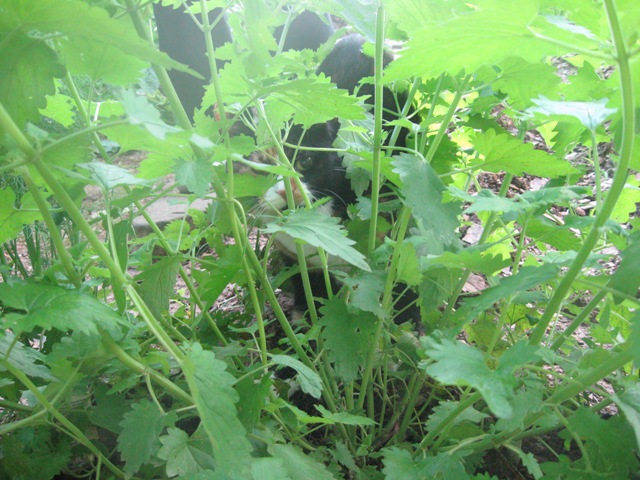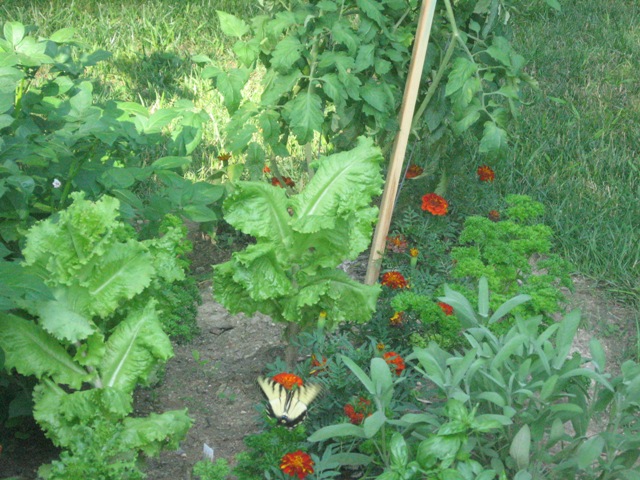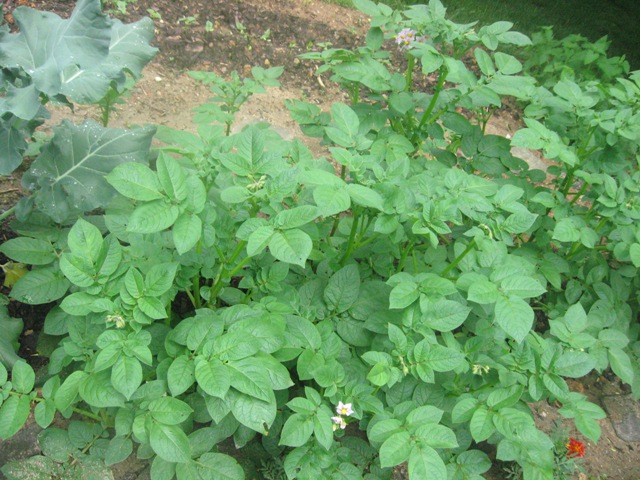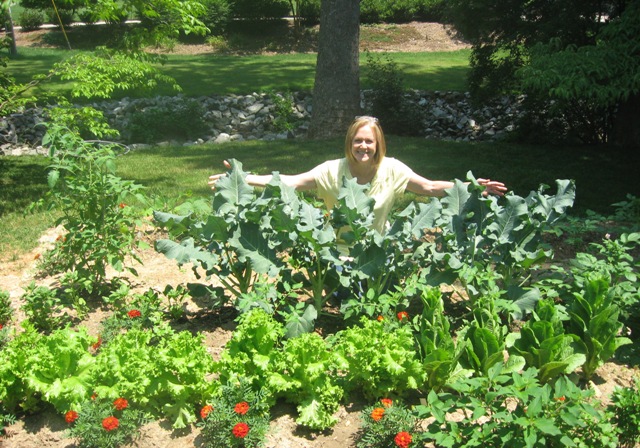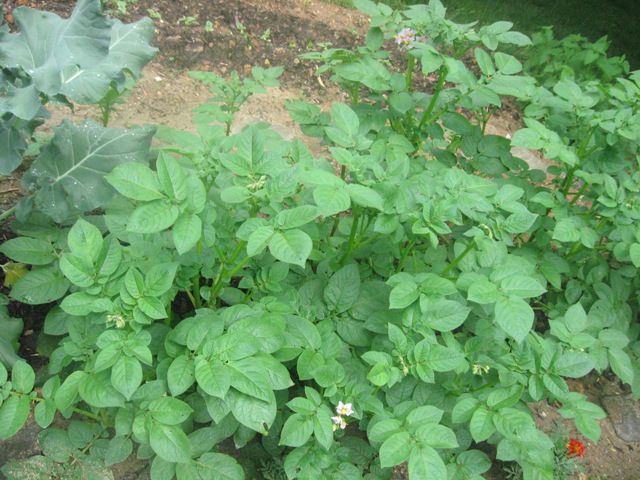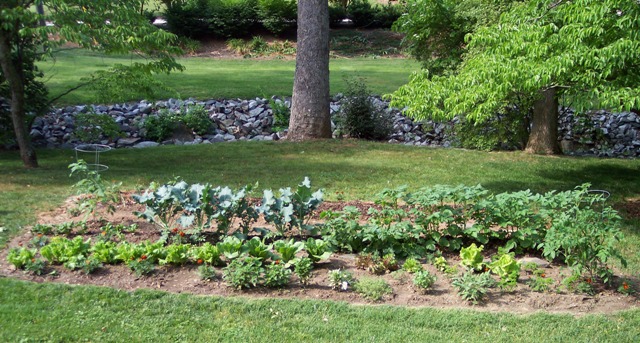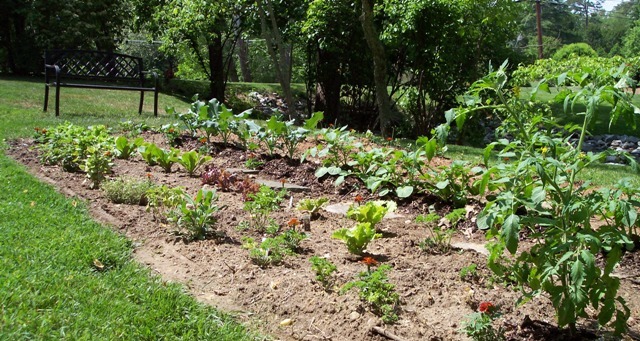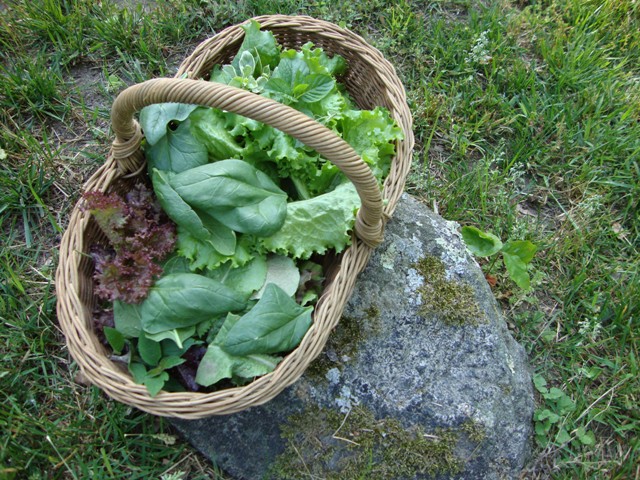About
Welcome to my garden! Join me in the trials, successes and errors of my newest passion. I plan for this to be fun, healthy and rewarding!
Currently, I'm a Real Estate Investor, mother of two, and serious blogger at KarensPerspective.com.
Categories
- Asparagus
- Beans and Potatoes
- Birds
- Black Raspberries
- Blueberries
- Broccoli
- Butterflies
- Cabbage
- Cantelope
- Carrots
- Citrus Trees
- Container Gardening
- Creatures Great and Small
- Cucumber
- Dogwood
- Fall plantings
- Farmer's Almanac
- Fiddle Leaf Fig
- Flowers / Flowering plants
- Fruit Cocktail
- Fun Stuff
- Garden Organization
- Garlic
- General
- Getting Started
- Ground Cover
- Herbal Tea
- Herbs
- Hostas
- Japanese Maple
- Kale
- Lawns
- Lettuce
- Mason Bees
- Meyer Lemon Tree
- Moss
- Onions
- Organic
- Planting
- Pond
- Potatoes
- pumpkins
- Raspberries
- Resources
- Roses
- Seeds
- Shade Plants
- Soil and Mulch
- Spinach
- Strawberries
- Successes
- Tips & Suggestions
- Tomatoes
- Trees
- Waiting
- Watering
- Watermelon
- Weather & Climate conditions
- Weeds
Archives
- February 2016
- October 2015
- September 2015
- May 2015
- March 2015
- November 2014
- September 2014
- August 2014
- May 2014
- April 2014
- March 2014
- January 2014
- October 2013
- September 2013
- August 2013
- July 2013
- June 2013
- May 2013
- April 2013
- March 2013
- February 2013
- January 2013
- November 2012
- August 2012
- July 2012
- June 2012
- May 2012
- April 2012
- March 2012
- November 2011
- September 2011
- August 2011
- July 2011
- June 2011
- May 2011
- April 2011
- March 2011
- August 2010
- July 2010
- June 2010
- May 2010
- April 2010
- March 2010
- February 2010
Garden Visitors
Posted in Fun Stuff
2 Comments
We’re going to eat Broccoli tonight!
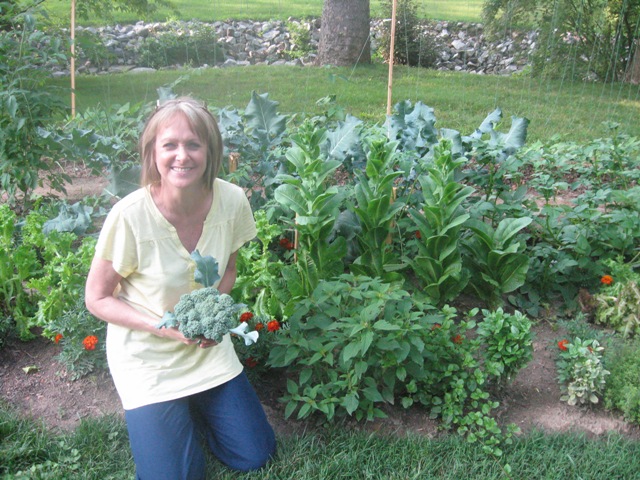 I just harvested the first broccoli head! I don’t even care if it tastes good because it looks so beautiful!
I just harvested the first broccoli head! I don’t even care if it tastes good because it looks so beautiful!
Thank you, Mother Nature!
Posted in Broccoli
2 Comments
Broccoli
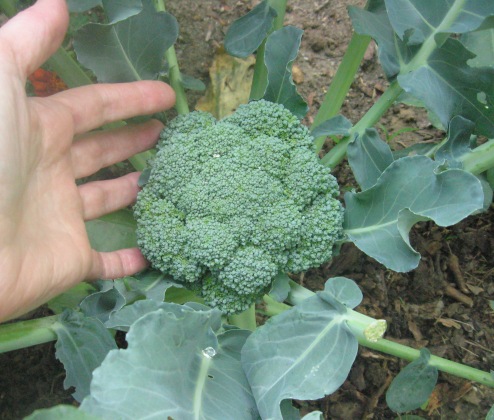 Well, I was told that I planted the broccoli too late and, therefore, wouldn’t get broccoli this year. My sister said that was bunk.
Well, I was told that I planted the broccoli too late and, therefore, wouldn’t get broccoli this year. My sister said that was bunk.
I am thrilled to report to my sister that all of my broccoli plants are bearing and, according to the calendar, I have only about 2 weeks left before I can harvest.
 I now know that broccoli is a cool weather plant and will be planting them again in the fall. I love my broccoli plants, leaves and all!
I now know that broccoli is a cool weather plant and will be planting them again in the fall. I love my broccoli plants, leaves and all!
Posted in Broccoli
2 Comments
How are my potatoes?
Did I “hill” them enough? They’re flowering, which means the baby potatoes are forming. Is it too late to hill them more now?
So many great sites online. This one, Northwest Gardening, says:
“Once the leaves are about a foot tall, hill them up by covering all but the top 2-3 inches of the plant. You can use soil, though some people prefer straw or sawdust to make digging easier in the long run.”
Well, I hilled them for a bit as they were growing but certainly not a foot, more like 6″-8″. And, he goes on to say that he often does this twice. Ugh.
Mine fall over when we get a heavy rain. Frank said that’s because they’re not hilled up enough. Don’t they normally fall over in heavy rains?
I read that 2 weeks after they start flowering, you can dig up new potatoes. I may see if I can find a couple. I would love to know what’s going on under that soil.
I apologize to this first batch of potatoes that they were planted during my practice year. I’ll be making many changes with future plantings!
Posted in Potatoes
Comments Off on How are my potatoes?
What to do with Broccoli Leaves
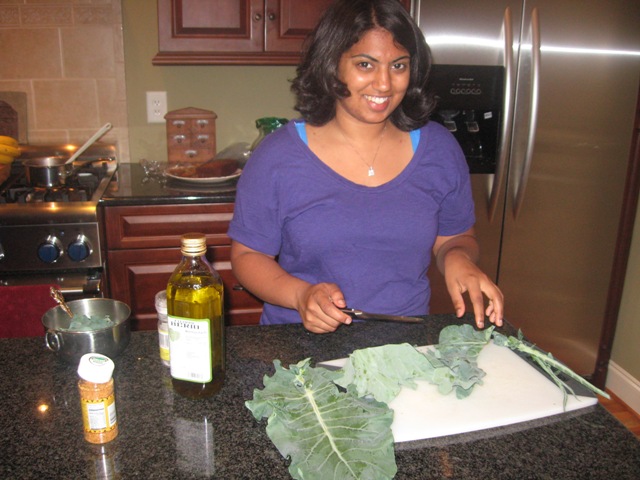 We found the greatest recipe for using broccoli leaves. Broccoli Chips!
We found the greatest recipe for using broccoli leaves. Broccoli Chips!
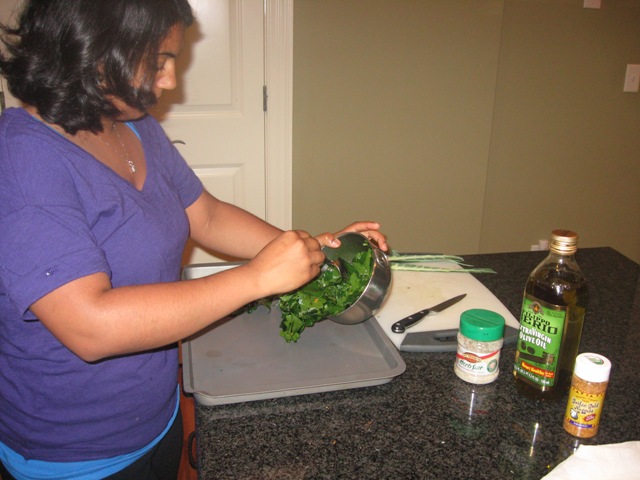 We cut the leaves and took out the stalk. Stirred them in Olive Oil. Sprinkled with seasoning salt and garlic. Baked 350* for 8 minutes.
We cut the leaves and took out the stalk. Stirred them in Olive Oil. Sprinkled with seasoning salt and garlic. Baked 350* for 8 minutes.
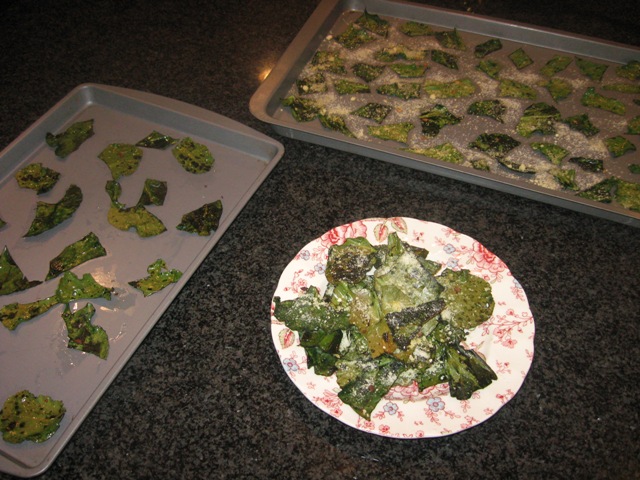 We also sprinkled some with Parmesan cheese. They were so good! And, now, I don’t have to waste those beautiful leaves.
We also sprinkled some with Parmesan cheese. They were so good! And, now, I don’t have to waste those beautiful leaves.
What have you tried?
Posted in Broccoli
15 Comments
Broccoli and Potato plant Leaves
I have the biggest, most gorgeous broccoli leaves. Maybe everyone who grows broccoli has them, I don’t know because this is my first year as a gardener.
But, I’ve been wondering, what can you do with those wonderful broccoli leaves?
broccoli raab = broccolirab = broccoli de rape = broccoli de rabe = brocoletti di rape = brocoletto = rappi = rape = raab = rapini = cima di rapa = cima di rabe = choy sum = Chinese flowering cabbage. This slightly bitter cooking green has long been popular in Italy and is now catching on in America. It’s best to just eat the florets and leaves; the stems are quite bitter.
And, I wondered the same thing about the gorgeous potato plants. Someone told me that Asians use the leaves of the potato plants in their cooking. However, WikiAnswers said: Potato leaves are poisonous. Potato leaves, flowers, sprouts and green or “sun-scalded” potatoes contain a glycoalkaloid that is a natural defense mechanism to protect the plant from predators. I believe the name of the glycoalkaloid is solanine, and is also found in the leaves of tomatoes. I do not advise this, but you can leave a potato in the sunlight for some days until it turns green. Then cook and eat it. You probably won’t die, but the headache you’ll get might make you wish you had. Solanine toxic effects tarket the gastrointestinal, liver, heart. Eating potato leaves can, in fact, kill you. .
So, ok, I’m convinced. I need to learn about eating the broccoli leaves but forget about the potato plants!
What’s Happening to my Potatoes?
I wrote this question to my brother-in-law because he is quite the gardener (well, he gives all the credit to his mother). At any rate:
“My potato plants grew up into beautiful bushes. Now they have fallen over and have flowers coming out. So, what does this mean? Close to having potatoes?”
Frank’s response: “Well the potatoes falling over is a sign that they have not been mounded enough. Not too much of a worry really unless they take away the light/space for other plants nearby. The flowers are normal. In fact when the first potatoes were brought to Europe by the Spanish, the people thought that they were to admire the flowers, nobody had told them about eating the bulbs!
The potatoes will actually still be quite small and not ripe yet. I wouldn’t think they can be harvested for a few more months yet. Usually a good sign is when the flowers have turned to seeds and the foliage starts to yellow and die-off. Then it is time to get the potatoes out. Only early varieties are harvested in summer, most will be harvested in September or even later.”
Cheers
frank
Posted in Potatoes
15 Comments
Watering and Waiting
May. Hmmm. So much has been planted and now I just tend it while it grows.
Actually, I’m quite thrilled that there’s nothing now for me to screw up except the watering. Thank goodness I’m not in charge of cell division or photosynthesis.
Yesterday, I planted more beans. Everything I read said the 15th would be the perfect day. So, I planted. Last night, I read Farmer’s Almanac again. It said don’t plant on the 15th, plant on the 17h. Anything planted on the 15th would rot. It’s been raining ever since I planted. I’m sure they’re under the soil rotting.
I may be the only person on the planet who can’t grow beans. Thank goodness there’s plenty of other stuff to grow.
Posted in Beans and Potatoes, Waiting
1 Comment
May Garden
Someone told me last night that my lettuce won’t last much longer because it’s getting too hot out. What?!?!?! It’s only the first week of May! When do you grow lettuce?
And, apparently I was too late for broccoli. My plants look absolutely gorgeous, but he told me they’re cold weather plants so I, no doubt, will get no buds.
** So disappointed! **
Well, next year I’ll know much better. My lettuce, spinach and potatoes are so happy. Oh, and all of the herbs are, as well.
Hooray for my very first season!
Posted in Successes
2 Comments
Gardening Jobs for May
There is no better resource than the Farmer’s Almanac!
Weed perennial beds with special care to avoid pulling up precious self-sown seedlings. When you can tell for sure what’s what, pull the weeds and top-dress the plants with compost or rich soil — just before a rain, if possible.
Provide support for flowers that need it before they start to fall over. Try twiggy prunings or pea stakes for sweet peas and ramblers. Put Grow-thru rings in place for bushier plants such as peonies, balloon flower, and globe thistle.
Spread a little lime or wood ashes around delphiniums and peonies.
Divide late-summer or autumn-flowering perennials. If necessary, go after phlox and artemisia with a sharp spade or even an ax. If delphiniums need to be divided, remove and replant the new little plants growing around the outside of the clump. Discard the hard old heart.
Trim climbing roses and attach securely to fences or trellises.
Scatter crushed eggshells in a thick ring around roses to deter slugs.
Sow annual poppies and baby’s breath in borders for midsummer bloom by scattering them between the other plants, covering with fine soil, and tamping down gently.
Prune suckers from fruit trees now before they become established.
Melons often benefit from supplemental warming, such as that provided by growing under plastic. Wait until the transplanted seedlings are established, as they cannot take up moisture very well at first and can easily get dehydrated.
Plant aboveground crops in the light of the moon.
Thin beets and lettuce and use the tiny thinnings to fill in spaces in the row or to start additional plantings elsewhere.
For a crop in two years, plant year-old asparagus roots about eight inches deep in trenches lined with rich compost. Fan out the roots and space two feet apart. Cover gently with good soil.
When potato plants come through the soil, hill them up by pulling several inches of soil around their stems with a hoe to encourage deep roots and keep young potatoes from exposure to light.
Mulch between rows and keep the garden weeded to give emerging seedlings a fair chance.
Get that herb garden started by putting in plants. If you include mint, plant it in a large plastic tub (the kind drywall joint compound or birdseed comes in) with its bottom removed. This will help keep it from invading the rest of the garden.
An established asparagus bed will be ready to harvest. Patrol daily and select spears of about the same size (which will require the same cooking time). If you had trouble locating those first spears, mark the bed with stakes so that you can find them next year.
Watch for signs of drought in plants transplanted from containers. Apply water (not much, but often) close to each plant’s stem, where it will percolate down to the root ball. The larger the plant, the longer the recovery period, and the more diligently you need to water. Poke a pointed metal rod into the soil above the root ball. If the rod doesn’t penetrate easily, the soil is too dry. If it moves around and feels squishy, the soil is too wet.
Moles generally come calling this month. They’re searching for mates and also grubs in your lawn. To get rid of the grubs, apply milky spore disease (Bacillus popilliae or Bacillis lentimorbus), a dust you can buy at your local garden center. Or try a new product called Mole-Med, which has castor oil as its active ingredient. Moles don’t like the taste of this any more than you do.
Prune late-flowering shrubs, evergreens, and hedges.
Don’t be in a rush to plant tomato, eggplant, pepper, and other heat-loving seedlings if you live where late-May frosts are common. Old-timers will surely wait until after Memorial Day.
Don’t cut the leaves off spent spring-flowering bulbs. Dying and yellowing foliage may look unsightly, but leave it in place (and don’t tie it up) to help the bulbs ripen for next year’s show.
If you have crocuses growing in your lawn, don’t mow until their leaves have died down.
Don’t force clematis to climb a lamppost or fan trellis. Instead, give it a chance to climb trees, scramble over shrubs, or romp over the ground.
Posted in Garden Organization, Tips & Suggestions
Comments Off on Gardening Jobs for May

